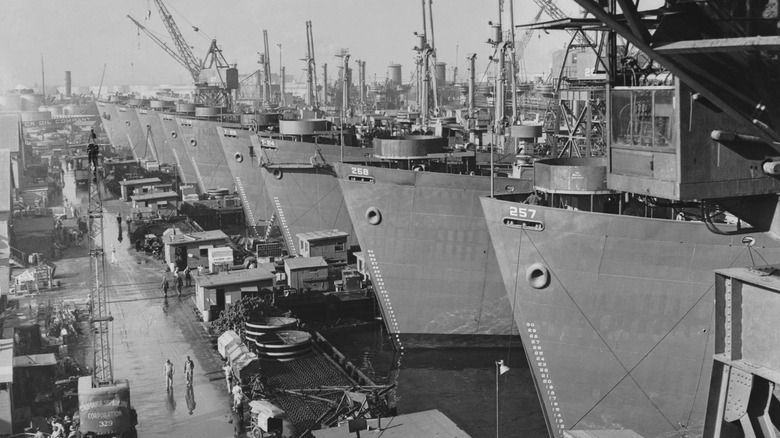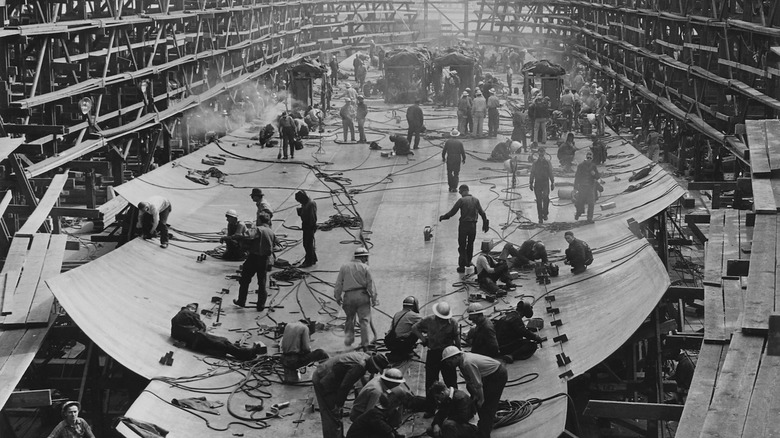The Truth About Liberty Ships Of World War II
There were few greater threats in the Atlantic Ocean during World War II than the U-boat. Where the German surface fleet was severely lacking in any meaningful number of surface ships — having no aircraft carriers unlike Japan, America, and Britain — their submarine force more than made up for it. German U-boats were responsible for the loss of thousands of ships and tens of thousands of Allied sailors (via Sky History). Such attrition was nearly too much for Britain to survive, as the island's overseas colonies and territories were what kept it fed and supplied.
Even after Alan Turing managed to decode the German "Enigma" encoding machine, which was used to coordinate U-boat attacks, shipping losses continued as the Germans adapted. The strategy that ultimately proved successful was to overwhelm the Germans through greater numbers, something that became feasible once America was fully committed to the war. With U.S. shipyards entered into the equation, a cheaper merchant vessel could be churned out in enough numbers that the Germans simply couldn't sink enough of them.
The fast production of Liberty ships came at the cost of quality control
The Liberty ship was originally a British design that was produced by and bought from American shipyards. According to History Collection, the U.S. Navy chose to adopt it once the British method of riveting the ship's components was replaced by welding. The new method made the design faster to construct, as welding required far fewer workers. This was a welcome benefit; even with the employment of women taking the place of men in industry, labor shortages were a constant issue. The design and production of the Liberty ship was so efficient that many were finished after barely a week of construction. One, the SS Robert E. Peary, was completed in only four days (via Kaiser Permanente).
The downside to all this is that the Liberty ships, despite being the most numerous type of ship utilized during the war, were not made to last. They did their jobs when called upon, from transporting cargo to patrolling coastal waters, but their quick construction left them prone to leakage and cracking. Some vessels were reported to have even split in two, prompting American planners to supplement them with the larger and sturdier Victory Ships (via National Park Service). In spite of its deficiencies, the Liberty ship not only helped overcome the U-boat threat, but served the U.S. and other nations decades after its intended lifespan. According to an article posted last May by History Collection, of the 2,700 built, just two remain operational today.

